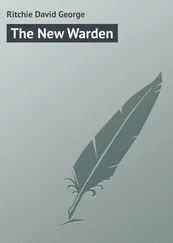The profusion of ferns, mosses and liverworts, including many oceanic species, extends up the mountains. In the extreme west, the shady corries and slopes facing between north and east have communities of leafy liverworts amongst or below heather or other dwarf shrubs and on rock ledges. These are virtually identical to liverwort carpets in similar situations on the equally wet mountains of the western Scottish Highlands. They contain species notable for their highly discontinuous world distribution in humid mountain regions as far apart as southwest Norway, British Columbia, Alaska, the Himalayas and Yünnan (e.g. Mastigophora woodsii, Herbertus aduncus and Pleurozia purpurea). The abundance of the woolly fringe-moss on stable block screes, bog hummocks and peat hags, and its dominance on many high mountain tops, is another feature of the oceanic climate.
Many plant introductions from warmer regions have flourished in the mild Irish climate. The luxuriant and colourful hedges of fuchsia are one of the most distinctive features of the west, while the invasion of woodland by rhododendron has created a conservation problem. The southwest, with lowest incidence of frost, has well-established growths of escallonia, New Zealand flax, giant rhubarb, the hedge veronica Hebe elliptica and the cabbage palm tree.
3
Mountains and Uplands
Nothing more sharply exemplifies relativity than a mountain. A 100 metre-high hill in a flat landscape assumes mountainous proportions, but a normal arctic-alpine plant, casting a cold eye for a frosty north-facing cliff, would pass it by. Compared with their cousins in Wales, Northern England and Scotland, Irish mountains are not only generally lower but also cover a smaller proportion of the landscape and, as a consequence, offer fewer opportunities for a rich mountain, alpine or arctic-alpine flora and fauna.
Raven & Walters 1define a mountain as land over 2,000 ft or 610 m – in practice any height above 600 m is generally accepted as mountain land – which puts only about 0.3% or some 240 km 2of Ireland in the ‘mountain’ category with approximately 190 peaks penetrating the 600 m limit. ‘Upland’ is a more difficult issue and is taken to include all land between 300 and 600 m and as such would embrace some 4,100 km 2of Ireland. Together, mountains and uplands occupy 5% of the country’s surface. Most elevations are located in the coastal counties with the notable exception of the Galty Mountains rising up from the south Tipperary lowlands to reach 919 m.
The great Irish botanist Nathaniel Colgan was the first person to point out that of the 67 species comprising the so-called Watsonian ‘highland’ group of plants found in Britain (named after the British botanist H.C.Watson), only 42 occurred in Ireland. 2However, as Praeger has said, Watson’s definition of highland plants – ‘species chiefly seen about mountains’ – does not fit well in Ireland, where many of these plants are found in more places than just the mountains. Sixteen of them occur as far down as sea level. 3In the 1950s Raven & Walters provided a much more rigorous list of 150 ‘mountain’ species recorded in Britain and Ireland. 1The vast majority of these fall into the ‘arctic-alpine’ category, i.e. plants that occur both in the Arctic and on some or all of the main European mountain ranges. If one ignores the taxonomically complicated and controversial dandelion-like hawkweeds ( Hieraciums) and the real dandelions ( Taraxacums ), only 58 species or 39% of the Raven & Walters list are found in Ireland.
Despite the impoverished representation of the ‘highland’ and ‘mountain’ plants in Ireland, Colgan made some interesting discoveries in the Mayo and Galway Highlands. ‘It may sound like a paradox to say that the botanical survey of an Irish mountain region derives a peculiar zest from the very poverty of our flora in alpine species. Yet the assertion may be made with perfect truthfulness. That the rapture of discovery varies directly with the rarity of the object sought for, that the value of the thing attained is measured by the labour of attainment – these are time-honoured truisms in every system of proverbial philosophy; and their essential truth is daily borne in upon the mind of the botanist who devotes himself to the exploration of any of the mountain groups in Ireland.’
The natural history interest of Irish mountains and uplands derives primarily from their extreme ecological conditions and their possible role as refugia for flora and fauna during the Ice Age. Some of the present day plants and insects may be relict species, survivors of these earlier days. The astringency brought about by poor soil conditions, few nutrients, high rainfall, searing winds, low temperatures, cold and short summers, frost and intense sunlight underpins the existence of a remarkable assemblage of mountain lichens, mosses, ferns, flowering plants, invertebrates and vertebrates that are at home in and, in many cases, restricted to, the mountain environment. Plant and animal species that live in such conditions are particularly interesting ecologically because to meet the prerogatives of survival and reproduction requires a strategy of adaptive responses.

Relief of Ireland. From F.H.A. Aalen, K. Whelan & M. Stout (eds) (1997) Atlas of the Irish Rural Landscape. Cork University Press.
But what about the physical framework of Irish mountains? What about their environmental conditions – the soils and climate? And finally, what kind of mountain flora and fauna characterises Irish eminences and where are the best places to encounter it?
Physical frameworks
Most Irish mountains and uplands are formed of the older and harder rocks, the most ancient dating from the Precambrian period some 600 million years ago. These are the schists and gneisses (formed mainly of quartz, feldspar and mica, differing from granite in the size, colour and configuration of the crystals) that were originally laid down as sediments in the seas prior to severe alteration by pressure and heat. The effects of these processes were to change radically the character of the minerals and particles that made up the sedimentary rocks. Also included amongst the oldest rocks are the granites, originating in the molten material spewed out from deeper sources some 400 million years ago and injected into the surface layers. Mountains built of these earliest rocks are found mainly in Donegal, west Mayo, west Galway and in the Leinster region – especially the Wicklow uplands. The granites of the Mourne Mountains, Co. Down, were formed 350 million years later. During the Cambrian period, slates and quartzites were born out of sedimentary marine muds and sands. These rocks are found mainly in north Wicklow, Wexford and at Howth in Dublin. More recently still, in the Ordovician period, shaly rocks with some sandstones and limestones, including some molten rocks that have flowed into them, formed in the sea as sedimentary depositions. These amalgams of rocks are found mainly in the southeast of Ireland.
The Devonian grits and sandstones, often called ‘Old Red Sandstones’, and principally made up of fresh or marine water deposits, form the bulk of the Cork and Kerry highlands. Closer to us still, Carboniferous limestones, the result of deposition of millions of tiny calcareous shells and marine creatures in warm tropical seas around 300 million years ago, line the floor of the Central Plain, while in the Burren, Co. Clare, these limestones thrust up to produce grey rounded hills. In Co. Sligo the Benbulbin mountain range has been carved from great thicknesses of such limestones. As to the most recent Irish mountains, the extensive upland plateau in Co. Antrim and eastern Derry, they are the result of outpourings of lava belched up from underground sources some 65 million years ago.
Читать дальше













